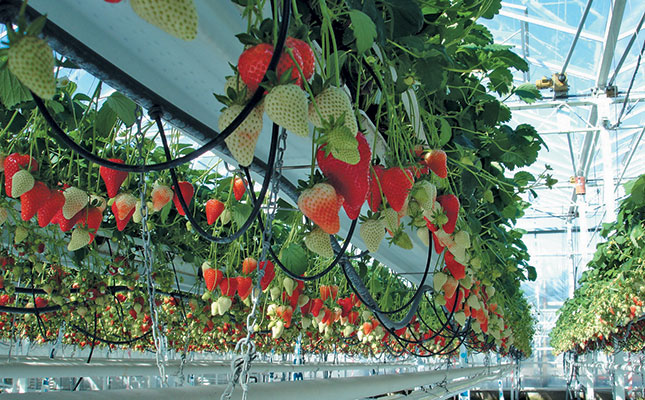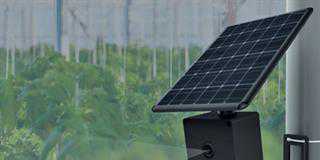
The biggest challenge for global agriculture today is producing enough food to meet the demands of the world’s exploding population.
The present global population of seven and a half billion could reach the 10 billion mark as early as 2050, and it currently takes only four days to add a further million people to the population, or 12 years to increase the population by 1 billion.
Therefore, primary global challenges include food insecurity, military defence issues, water and land scarcity, urbanisation, and energy demands. International hydroponics consultant, Prof Gert Venter, explores whether hydroponics is the key to sustainable agriculture and combatting these challenges.
Global hunger data
According to the Food and Agriculture Organization (FAO) of the United Nations’ global hunger data, more than 10% – about 800 million people – are undernourished and do not have enough food to lead healthy, active lives.
The vast majority of these people live in developing countries where about 13% of the population is undernourished, with the highest percentage (25%) residing in sub-Saharan Africa.
Organisation for Economic Co-operation and Development (OECD) data shows that the global military expenditure in 2012 of US$1,7 trillion was more than a thousand times higher than the US$1,6 billion allocated to agricultural support programmes (OECD estimates for 2016).
Greatest challenges
Plants need water, air, energy (light), a suitable climate and certain nutrients to grow, and this will have to be addressed if we want to deal with future food supply challenges.
Water is arguably the greatest of the four main global challenges.
World Health Organization statistics show agriculture uses about 70% of the available freshwater on our planet. This scenario is unsustainable in the long-run and requires renewed focus on efficient water use. The aim should be to convert tons of food produced per hectare to tons of food produced per cubic metre of water used for production.
Available areas of farmland suitable for crop production are declining at tremendous rates, exacerbating the challenges involved in meeting the food demands of the future.
In addition, FAO data shows that 54% of the global population is already living in urban areas. This figure is expected to rise to more than 60% before mid-century, and more than 80% by the end of the century.
Urban spread in the form of megacities, as well as areas required for roads, railways, airports and industries, will impact negatively on agricultural land needed for food production. It will also lead to other challenges such as the daily supply, distribution, and preparation of food, which has to be brought in from rural areas or other countries around the world.
By the end of this century, farmers will need to produce double the amount of food with less water and land, using less energy, while facing sharp increases in the costs of energy, labour, mechanisation, and fertilisers.
A new approach is therefore necessary to sustain our planet. We need to advance our expertise in plant production, food technology, sustainable management of natural resources, as well as the natural environment.
The primary challenge will be to safely provide more food to allow people to maintain a good quality of life, while also maintaining a healthy planet.
The technology
Hydroponic and greenhouse technology involves intensive plant production techniques that are all well placed to meet the challenges ahead. This technology includes many new methods of food production such as aquaponics, aeroponics, rural and indoor crop production systems, vertical farming, seawater greenhouses, and many more.
Development of these technologies are at an advanced stage, and some of the systems are already in full production to meet food production demands of the future with methods, plants, and animals that will be vastly different to those used today.
Although current food production systems are moving in the right direction, they will be unsustainable in the long-run. In the future, agriculture will need to develop alternative production systems that will be more efficient in terms of water, energy and labour use, to produce safe, nutritious food in a sustainable and environmentally-friendly way.
Hydroponics – growing plants without soil – has been used commercially for almost a century and has proven to be highly water-efficient, especially when combined with modern greenhouse technology.
Australian case study
An Australian comparative study revealed that, whereas about 470 000ℓ of water are required to produce A$100 (R1040) worth of rice, only 600ℓ are needed to grow an average hydroponically grown crop (see Table 1). Hydroponically produced crops also require significantly less fertiliser, as the nutrient supply can be fine-tuned to exactly meet the demands of each plant.
Growers already recycle more than 95% of the nutrient solution in their closed hydroponic systems.
Using floating raft hydroponic technology will further reduce water requirements, as it eliminates evaporation losses, provides better control of water temperature, and controls dissolved oxygen levels in nutrient solutions.
Farmers using conventional agricultural methods cannot control these factors at all.
An overview of current hydroponic and greenhouse production figures indicates that:
Tomato yields of more than 1 000t/ha have become the norm in first world hydroponic greenhouses. (South Africa’s average tomato yield is about 56t/ha).
Similar yields can also be achieved with a wide range of other horticultural crops.
Modern floating raft systems can produce more than five million heads of lettuce per hectare. Up to 20 crops per year are possible from the same area, compared with 200 000 heads/ ha/ year from conventional open field production methods, which may not all be marketable.
Strawberry yields of up to 150t/ha are commonplace when the latest hydroponic and greenhouse technologies are applied to maintain production throughout the year.
Seawater greenhouses using hydroponics in conjunction with seawater are already producing crops under desert conditions on a very large scale. The technology is highly applicable to regions where cold seawater is available adjacent to desert or semi-desert conditions (such as the West Coast of South Africa and most of Namibia’s coastal regions).
Latest trends
- The latest trends in hydroponic farming include the following:
- A rapid increase in urban agriculture, including rooftop greenhouses;
- Seawater greenhouses in which crops are produced using seawater;
- Vertical farms utilising rainwater and grey water for irrigation, solar energy, energy-efficient LED lighting, and full climate control under sterile conditions to produce crops of the highest quality.
Plant factories are becoming common practice in some of the world’s major cities.
For more information, email Prof Gert Venter at [email protected].
Further articles in the series will provide an overview of the reasons behind the failure of many local hydroponic projects, and provide proper management guidelines to ensure success under local conditions. Other topics will include various hydroponic and greenhouse production technologies, nutrition, pest and disease control, and related subjects.













